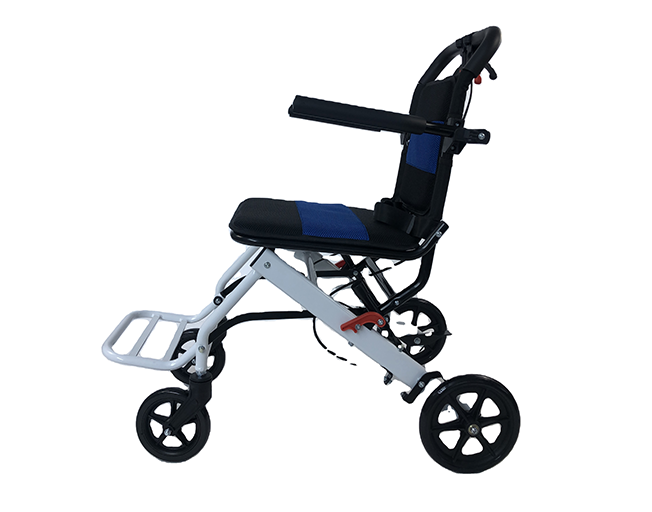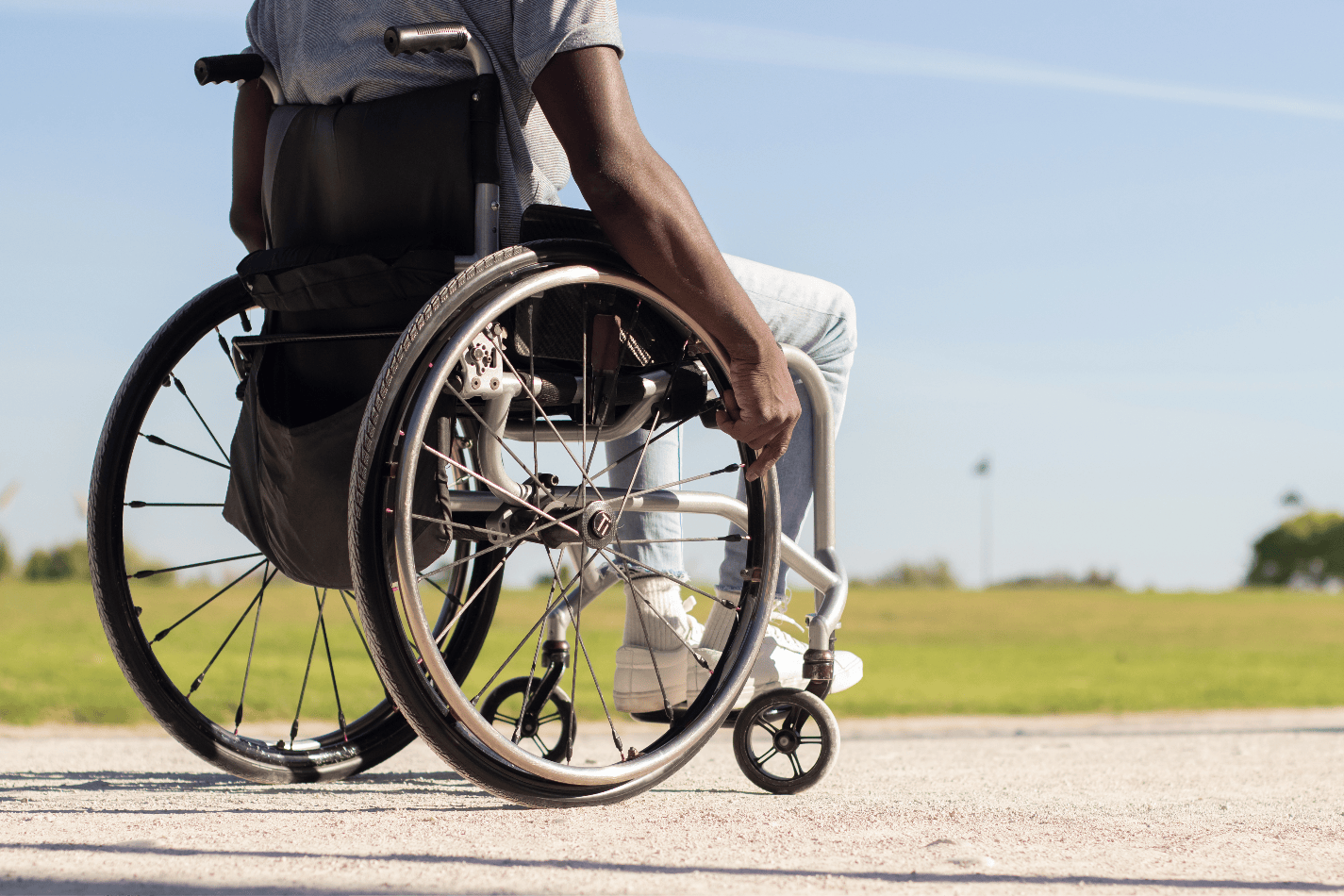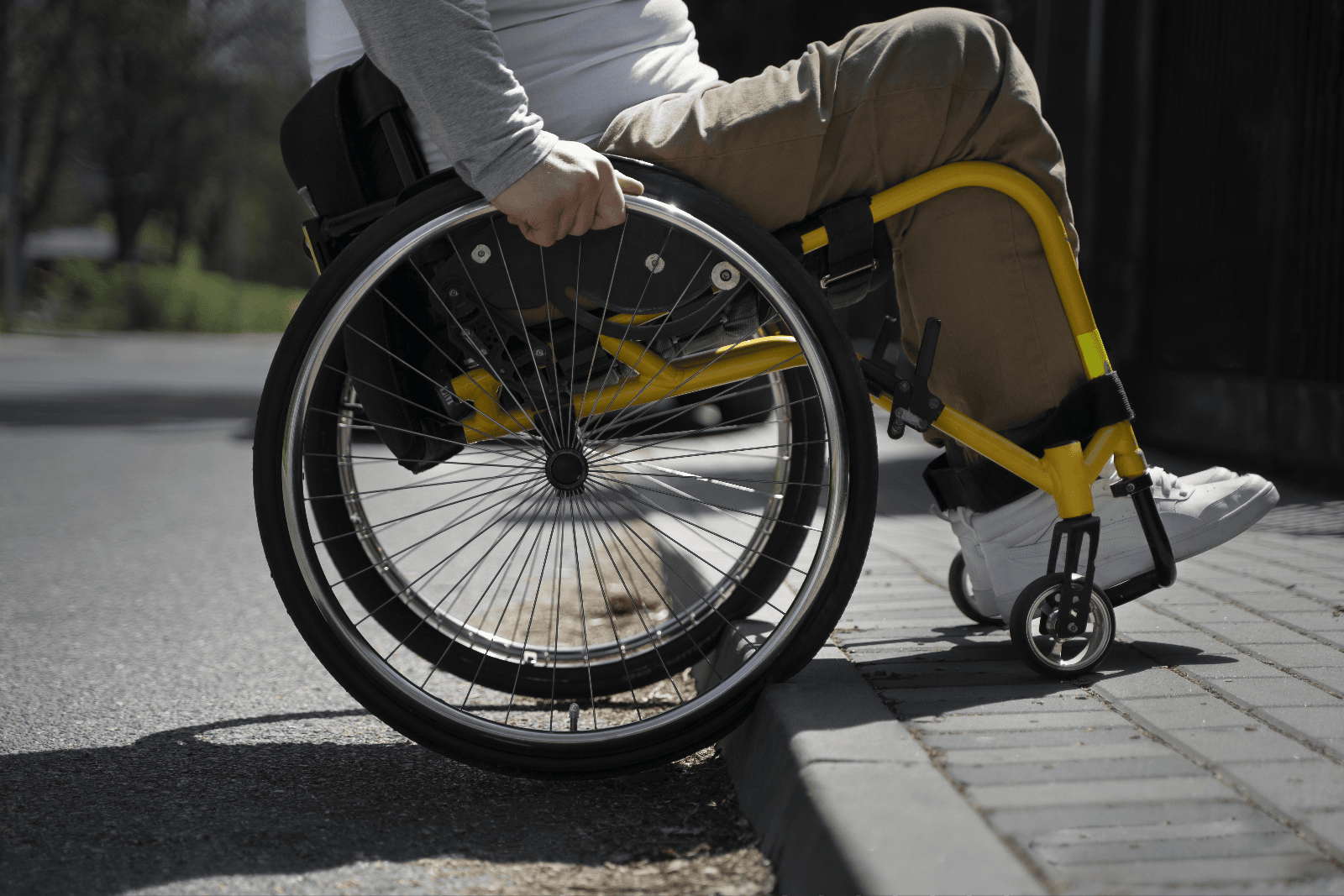Wheelchair Design Insights: Why Front Wheel Placement Matters
Time : Sep 25, 2025 View : 1,534
The arrangement of wheelchair front wheels plays a vital role in how well a wheelchair moves, stays steady, feels comfortable, and adapts to different needs. Whether someone is rolling through a house or tackling outdoor paths, the spot where these front wheels sit changes everything—from how tight a turn can be to how the user sits. This piece dives into why the placement of wheelchair wheels matters so much and how it shapes the user’s day-to-day life in all kinds of settings.

Overview of Wheelchair Wheel Placement
The positioning of wheels on a wheelchair isn’t random. It’s a careful mix of making movement smooth, handling easy, and keeping things safe.
In simpler terms, placing the wheels is all about juggling three big things: how easy it is to push, how well it turns, and how stable it feels.
Key Elements of Wheelchair Structure
Most wheelchairs come with bigger rear wheels for driving and smaller front caster wheels. The rear ones do the main job of moving forward. Meanwhile, the front wheels help with steering and changing direction.
Because of their size, the rear wheels roll with less effort compared to the smaller casters.
So, while the back wheels make long moves easier, the front casters are super important for guiding the chair.
The Role of Front and Rear Wheels in Mobility
How the front and back wheels are set up decides how simple it is for a user to push themselves or slip through tight spots. Here are a couple of examples:
-
Putting rear wheels nearer to the user’s middle point makes pushing less of a struggle.
-
Stretching the front casters farther out adds steadiness but cuts down on quick moves.
It’s best to keep the main wheels as close as possible to the user’s center balance point.
How Front Wheel Placement Affects Maneuverability
People using wheelchairs often deal with different space issues based on where they are. The position of the front wheels really changes how well they handle these tricky spots.
Turning Radius and Navigational Control
When the gap between front and back wheels is shorter, the chair can turn in tighter circles. This helps a lot in small hallways or busy places. But if the casters are pushed way forward, the chair stays steady on straight paths. The downside? It can’t turn sharply as well.
You can get a similar result by setting the casters farther from the balance point, though it makes quick twists harder.
Indoor vs. Outdoor Use Scenarios
Inside a home, where space is tight, being able to turn quickly is a must. Outside, though, staying steady matters more because of bumpy ground or slopes. Take these cases:
-
A heavier wheelchair for larger users needs to be both solid and simple to push, whether by the user or a helper. That’s why moving the front casters way forward helps a lot.
-
For super light wheelchairs, users often roll around town a lot. So, most of these chairs keep the rear wheels close to the middle point for better control.
Impact on User Independence and Efficiency
Those who push their own chairs gain a lot from front wheel spots that cut down on drag while keeping control easy. A good setup gives users more freedom. It makes moving around less tiring on the body.
Stability and Safety Considerations
Keeping steady is another huge factor tied to how wheels are placed. This is especially true for folks with weaker balance or core strength.
Balance Distribution with Different Wheel Placements
How weight spreads over the four wheels decides if the chair feels safe while moving or just sitting still.
To avoid tipping over from being too light on one side, be careful not to lean too much while in the chair.
This shows why spreading weight evenly with the right wheel setup is so important.
Risk of Tipping and Terrain Adaptability
On hills or rough patches, a bad wheel setup can raise the chance of flipping over.
Don’t count on speed to rush the chair up steps. Doing so might lead to crashes or harm the chair itself.
Some electric models have cushioning systems to lower these dangers. For example:
The entire chair has a four-wheel shock system. This makes the ride nice and smooth.
Influence on User Confidence and Comfort
Feeling sure of yourself grows when the chair feels safe to use. A solid design with the best caster spots adds straight to how comfy it is every day.
Influence on Seating Position and Posture
The spot of the wheels doesn’t just change how the chair moves. It also shapes how a user sits and feels.
Ergonomic Alignment with Front Wheel Positioning
If casters sit too far ahead or behind compared to the seat, users might tilt in odd ways. Over time, this can cause aches or strain.
Well-made seat designs help keep the body in line when matched with a balanced wheel setup.
Pressure Distribution and Long-Term Health Effects
A good setup lowers stress on hips and back. This is key to stop sores or body pain from sitting too long.
A thick seat pad helps too. You won’t feel worn out even after hours of sitting.
This proves how smart design choices pair with wheel spots for better health.
Accessibility for Transfers and Daily Activities
Where the front casters sit can make moving from chair to bed or bathroom easy or hard.
A liftable handrail lets users get in and out from the side without bending too much.
This mix makes everyday use so much better.

Performance Across Different Environments
From strolling on sidewalks to hopping on a bus, the front caster design is super important for real-life use.
Urban Mobility and Tight Spaces
Small doorways need chairs that can twist easily. Chairs with casters set close shine here since they don’t need much room to turn.
Keeping the balance point between casters and main wheels, without making the chair too long, works well for this.
Uneven Surfaces, Ramps, and Outdoor Navigation
Materials that soak up bumps make outdoor rides nicer.
The front and back wheels with shock-dampening honeycomb design smooth out the trip.
This helps glide over ramps or rocky paths without harsh jolts.
Compatibility with Public Transportation Systems
Chairs that fold up and are light in weight make travel easier.
A quick one-step fold feature lets you open or close the chair fast. This is handy for buses or trains.
Customization Based on User Needs
There’s no single perfect setup. Wheelchair designs must match each person’s way of living.
Matching Front Wheel Placement to Lifestyle Requirements
Active Users vs. Passive Users
People who move a lot might like tighter caster setups for quick turns. Those who need help moving often do better with wider setups for extra support.
Pediatric vs. Geriatric Considerations
Kids need chairs that turn fast for places like school. Older folks want added safety stuff, like bars to stop tipping, helped by smart caster placement.
Clinical Recommendations from Healthcare Providers
Experts check how someone sits and moves before picking a wheel setup. They make sure it fits both health needs and daily life goals.
Materials, Engineering, and Technological Innovations
New ideas in building things have boosted how well wheelchairs work through better stuff and designs.
Lightweight Frames and Suspension Systems
Frames made of strong, light aluminum keep the chair tough without being heavy.
The frame uses high-strength aluminum welding. It’s light as a feather.
Add in a four-wheel cushioning system, and you get both strength and ease on all kinds of ground.
Adjustable Front Fork Designs
Some chairs let you shift the casters to where you like them. This helps change how the chair works as your needs shift over time.
Integration with Smart Mobility Features
Cool extras like batteries you can take off add to comfy designs.
A battery box you can pop out and charge anywhere brings ease without messing up the chair’s solid build or wheel setup.
Choosing the Right Configuration for Optimal Functionality
In the end, the best choice depends on what fits a person’s own needs, not just the chair’s features.
Evaluating Trade-offs Between Agility and Stability
Makers have to think if quick turns are worth losing some straight-path steadiness. It depends on where the chair will be used most, like inside or outside.
Consulting Professionals for Personalized Fit
Therapists who help with movement are key. They look at how a person’s body works before suggesting the best setup based on real habits, not just guesses.
Trial Periods and Real-World Testing
Trying out different setups shows what feels right. This is extra helpful when switching from short-term recovery aids to long-term chairs that need to stay comfy for years.

Xunyu Medical: A Trusted Supplier of Mobility Solutions
Xunyu Medical brings top-notch gear for getting around, built for real-life needs. They offer everything from simple tools to high-tech electric chairs made for great performance.
Product Range Including Bedside Handrails, Crutches, Wheelchairs, Bath Chairs, Walking Aids
Their lineup covers all kinds of help for moving, whether at home or out and about.
Commitment to Quality, Durability, and User-Centric Design
Each item shows strong build quality, like frames of carbon fiber, comfy seat designs, and double-motor power for trust even under tough use.
Support Services for Individualized Mobility Needs
They give expert advice and flexible add-ons. This ensures every person gets exactly what fits their life, not just a one-size-fits-all fix.
FAQs:
Q1: How does front wheel size change wheelchair use?
A: Bigger front wheels do better outside by handling bumps well, but they might make indoor turns harder. Smaller ones help with sharp turns but don’t work as great on rough spots. Pick based on where you’ll use it most.
Q2: Can I change my wheelchair’s front wheel spot after buying it?
A: Some fancy models let you tweak the forks a bit for new positions. But big changes need a pro’s help to keep the chair safe and working right.
Q3: What’s more important—turning easy or staying steady?
A: It’s up to the user! Active folks often want quick moves, while older users might pick steadiness to avoid falls. Talking to health experts who know your body and life helps find the right balance.


